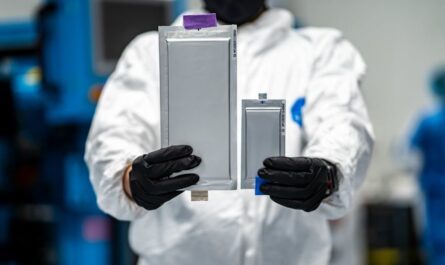Industrial Robotics refers to the application of robots in manufacturing industries. Robots are automated machines capable of performing repetitive tasks with a high degree of accuracy. They can be programmed to carry out dangerous, difficult or tedious jobs that humans would prefer to avoid. Some key characteristics of industrial robots include their ability to operate 24/7, perform tasks faster than humans and work in hazardous environments.
Types of Industrial Robots
There are various types of Industrial Robotics based on their configuration and application. Articulated robots resemble the human arm and have multiple rotating joints to perform tasks. SCARA (Selective Compliance Assembly Robot Arm) robots are best suited for assembly line applications due to their horizontal arm reach. Delta robots have parallel architecture and are useful for pick and place operations. Cartesian robots use a linear coordinated system and are ideal for precision tasks like welding. Cylindrical robots rotate around a central vertical pole and are commonly used in packaging. Spherical robots have omni-directional movements and can access any point in 3D space.
Applications of Industrial Robots
Manufacturing: Assembly lines employ robots for pick and place, welding, sealing and product testing operations. Automotive, electronics and food & beverage manufacturing facilities extensively use industrial robotics.
Material Handling: Robots are used to load and unload materials from machines, package and palletize finished goods and transport components within factories. This eliminates repetitive lifting tasks.
Machining: Robots perform milling, turning, grinding and other metalworking tasks more efficiently and precisely than humans. They help improve quality and reduce production time.
Foundry: Casting operations use robots for pouring molten metal, removing gates and risers and handling hot parts directly from the furnace. This minimizes human exposure to hazardous conditions.
Packaging: Food packaging, bottling, cartoning and palletizing units employ robots for high-speed wrapping, sealing, boxing and stacking of products. They ensure uniform packaging.
Laboratory: Laboratory robots assist in micro-manipulation tasks like DNA sequencing, cell culture experiments and chemical analysis that require utmost precision. They reduce contamination risks.
Benefits of Industrial Robotics
Increased productivity: Robots can perform repetitive tasks continuously at much faster rates compared to humans without fatigue. This substantially boosts factory output.
Improved quality: Robots ensure higher consistency, precision and accuracy in manufacturing processes. They minimize human errors and variations in product quality.
Safety: Industrial robots take over hazardous jobs in areas with risks of chemicals, fires, noise or heavy lifting. This protects workers from injuries and accidents.
Cost savings: Though installation costs are high initially, robots lower labor expenses in the long run. Maintenance costs are also relatively low compared to training and insuring human employees.
Flexibility: Robots can be quickly reprogrammed and redeployed on different tasks as production requirements change. This enhances manufacturing flexibility.
Global competitiveness: Automation through industrial robotics helps companies reduce production costs and prices to remain competitive in international markets.
Challenges of Industrial Robotics
High capital costs: Robot systems are expensive to purchase and install. Small manufacturers may not realize quick returns to justify the investment.
Skill shortage: There is a lack of expertise in robotics engineering and programming. Training workers to manage automated facilities requires specific skills that may not be readily available.
Job losses: Widespread industrial robotics adoption could reduce the demand for human laborers performing repetitive tasks leading to unemployment in some sectors.
Inflexibility: Reprogramming robots or modifying their work cells requires downtime affecting productivity if changes need to be made frequently. Flexible automation is more expensive.
Collaboration issues: Ensuring close human-robot collaboration safely while sharing a common work area remains a challenge, especially for safety-rated industrial robots.
Reliability: Downtime due to robot or controller failures can be costly. Dependable robots with minimal mean time between failures are necessary to maximize uptime.
Future of Industrial Automation
The industrial robotics market is expected to grow exponentially in the coming years driven by various factors. Cobots or collaborative robots will work closely alongside humans without safety enclosures. AI and machine vision technologies will enable more complex automation. Robots will augment workers through assistance rather than replace jobs. Modular robot systems and plug-and-play components will facilitate easy reconfiguration. Cloud-based robotics will facilitate remote monitoring and over-the-air upgrades. Wearable exoskeletons will enhance human strength and endurance. Overall, industrial robotics will become more adaptive, affordable and integral to modern manufacturing.
*Note:
- Source: Coherent Market Insights, Public sources, Desk research
- We have leveraged AI tools to mine information and compile it



